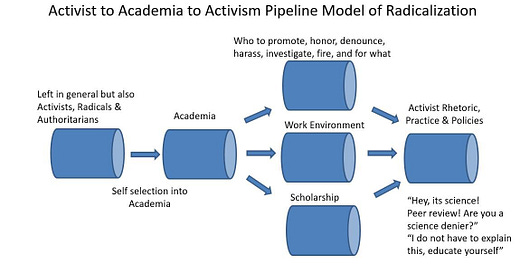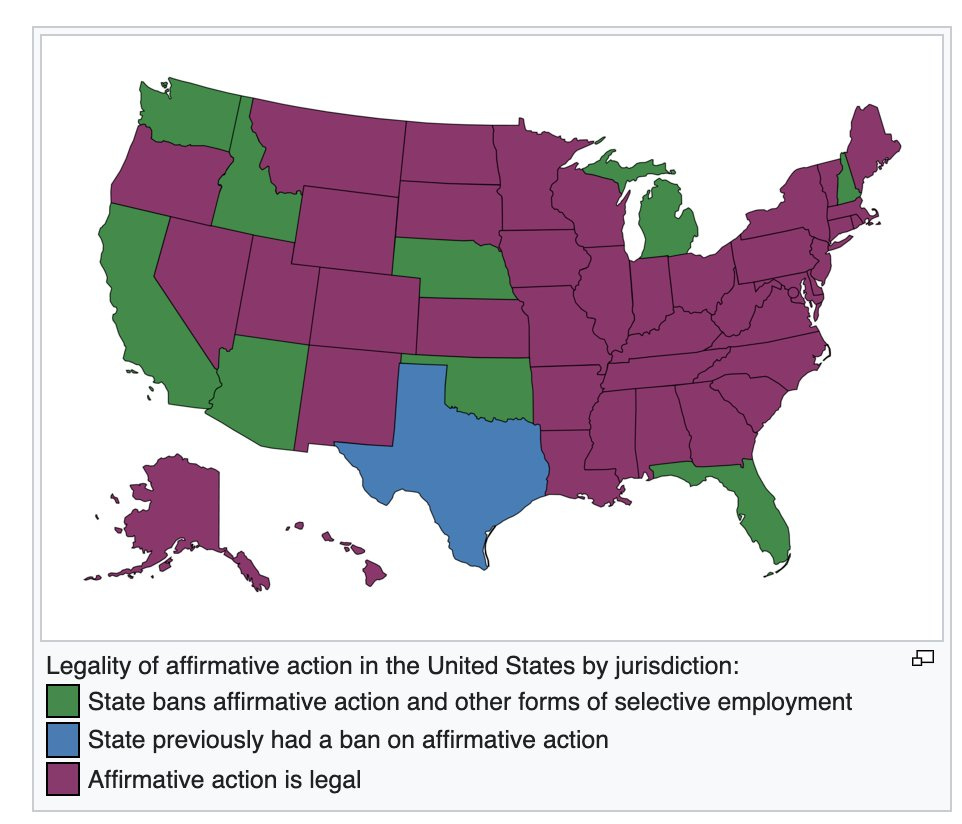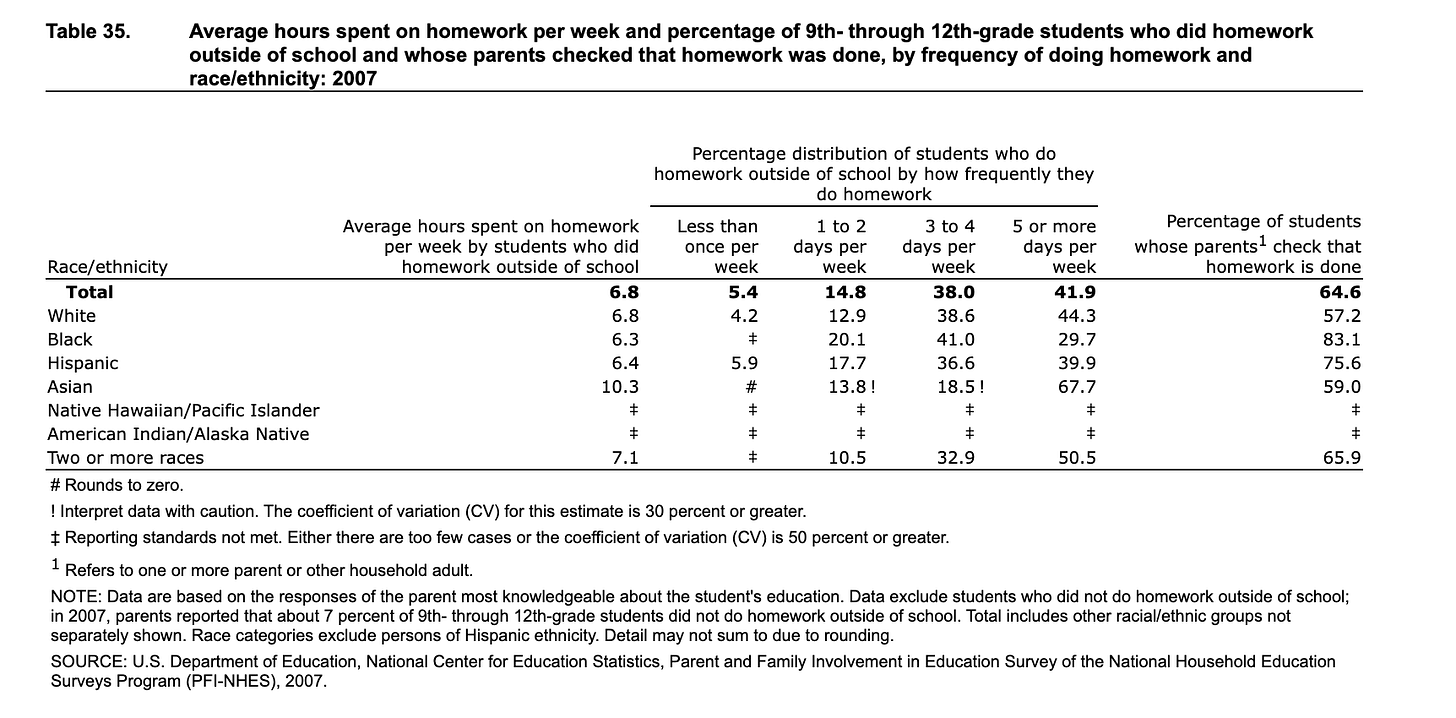“Racial Industrial Complex” refers to an industry that has monetized racial discourse. Entities have recognized that Americans, and human beings in general, respond strongly to perceived incidents of racial injustice. Universities have entire departments dedicated to the studying of racial grievances funded by hefty tuition fees paid by students, authors are able to secure mainstream prominence by publishing books that appeal to white guilt, and Legacy Media (the term in this context referring to major news outlets such as CNN and Washington Post) platforms are able to maintain their ratings by pumping out news stories creating a 24/7 discourse about race.
This phenomenon, the commodification of racial grievances, has gained prominence in the past decade. Out of the many key players, this article will focus on covering examples of how the American University system serves as a key pillar of the Racial Industrial Complex through the coddling of young minds that should be challenged, discriminatory practices on campuses, and the distribution of degrees in the critical theories that form the intellectual backbone of the Racial Industrial Complex.
Despite Diversity, Equity, and Inclusion (DEI) being the branding used by universities and activists in promoting the Racial Industrial Complex, campuses can be more accurately described as groupthink echo chambers where similar thoughts are parroted. There exists a generally large imbalance in academia in terms of staff political leanings with the number of moderate (46.1 percent) and liberal (44.1 percent) professors greatly outnumbering Conservative professors (9.2 percent). A more recent study indicated that from a sample size of 7,243 professors:
3,623 to be registered Democratic
314 to be registered Republican
For an overall D:R ratio of 11.5:1. The disparity in viewpoints only grows larger when examining most of the fields taught at universities:
Economics 4.5:1
History 33.5:1
Journalism/Communications 20.0:1
Law 8.6:1
Psychology 17.4:1
With some colleges having reported zero conservative faculty members in the liberal arts departments. The political biases of the universities have had obvious impacts on their hiring practices and resulted in lots of administrative bloat and over-hiring of DEI staff.
The above chart is a snippet of the over 100 members of the DEI staff employed by the University of Michigan. Collectively, these staff members are paid about $15 million dollars every year; this is enough money to cover the tuition fees for hundreds of students and make a real difference but instead, it’s contributing to bureaucratic bloat. At a broader level, it’s estimated that DEI staff members make up an average of 3.4 positions for every 100 tenured faculty which in turn contributes to faculty bloat and increases in tuition costs.
It is a weakness to only be surrounded by like-minded individuals. Crafting strong arguments and avoiding nonsensical statements becomes a difficult task in echo chambers filled with yes-men. The high sensitivity for DEI topics at college campuses has resulted in some strange occurrences such as the controversy at USC over a professor using a Chinese word that resembles the n-word, some universities experimenting with ‘white free days’ at their campuses, and opt-in segregated graduation ceremonies. Despite the DEI branding and over-enforcement of perceived racial offenses (many of which should not be considered offensive, to begin with), universities still engage in systemically racist practices such as Affirmative Action admissions policies and tolerate racism from their faculty as long as it’s towards the ‘allowed’ races.
While professors face scrutiny for illegitimate lessons, anti-white racism is casually tolerated at many university campuses with the above showing one example from a Tuskegee University professor. As of the writing of this article, Tuskegee University had not provided a comment while it is safe to say similar comments towards another race would have faced immense scrutiny. Whites are experiencing increasing hostility at university campuses and, along with Asians, face systemic racism in admissions. To clarify: what makes Affirmative Action a manifestation of systemic racism is the fact it considers race as a factor in who gains acceptance into universities. A lawsuit against Harvard revealed that, with all else being equal, an:
“Asian-American with a 25% chance of admission would have a 35% chance if he were white, a 75% chance if he were Hispanic, and a 95% chance if he were African American.”
Harvard is not the only university that practices Affirmative Action with Yale also having faced lawsuits for its discriminatory admissions practices and most states have opted to keep Affirmative Action legal.
Ultimately there are multiple variables that can factor into disparate outcomes between races such as family, socio-economic status, culture, and time spent studying. In order to generate meaningful solutions, it is necessary to reject univariate thinking in recognizing most issues are multivariate.
Cross-examining the graph with the Harvard admissions data indicates the more your racial group studies on average as a whole, the harder it’ll be for the individual to gain admission relative to equally qualified candidates of other races. Asians are the hardest hit by Affirmative Action policies that undermine meritocracy in the United States followed by Whites.
Policies like Affirmative Action often bleed into the real world as seen by the education curriculum based on Critical Race Theory and the following Utah chart used to determine how to prioritize people for COVID-19 treatments.
Although the Utah process for distributing COVID-19 treatments is wrong in of itself, it is only a symptom of the larger issue: The Activist to Academia to Activism Pipeline Model of Radicalization
Essentially the model visualizes the selection bias that takes place in both the choosing of students for enrollment and the determination of what academic literature to produce and put out into the world. Ultimately, it is important to recognize that not all methodologies used in academic literature are made equal. While the scientific method is a time-tested method for producing quality research, many of the Critical Theory departments house other methodologies such as Autoethnography:
“Autoethnography is a form of qualitative research in which an author uses self-reflection and writing to explore anecdotal and personal experience and connect this autobiographical story to wider cultural, political, and social meanings and understandings.” - Wikipedia
In other words: Autoethnography (sometimes called mesearch) is essentially writing about your personal experiences and attempting to extrapolate generalizations of the world based on those experiences. It is the academic equivalent of writing a diary entry and assuming the general population had the same day as you did and is illegitimate in producing real science. Research is not the same as Mesearch; while one produces legitimate insights the other only serves to muddy the water and provide activists ammunition for their causes. For example, a consensus in the field of Gender Studies does not mean a consensus in the field of Biology. One is powered by mesearch and the other is powered by research. They are not the same. While one recognizes theories as being falsifiable the other snares any who dare question its doctrine in Kafka Traps:
A Kafka trap is a fallacy where if someone denies being x it is taken as evidence that the person is x since someone who is x would deny being x. The name is derived from the novel The Trial by the Czech writer Franz Kafka. The reason this is fallacious is that it lumps together people who genuinely are not guilty of a perceived offense in with people who have committed the perceived offence and are trying to escape punishment.
and accusations of violating their safe space privileges:
The term safe space refers to places "intended to be free of bias, conflict, criticism, or potentially threatening actions, ideas, or conversations".
A university can not function as an effective institution for generating knowledge while protecting some ideas from criticism in the name of ‘safety.’ If people are not ready to gracefully handle critique when entering the academic pipeline, they are not mature enough to bear the responsibility that comes with being a vessel for knowledge. Not all degrees are made equal; this fact is reflected by both independent think tanks and universities like Georgetown. If a degree is based on hard science and research its holders can expect to do well in life; if a degree is based on pseudoscience, mesearch, and depends on safe spaces the universities are setting its holders up for failure. The bar for the quality of academic literature accepted by ‘fake degrees’ in the critical theories has been tested to be quite low as demonstrated by the Sokal Affair and the Grievance Studies Affair. Not only are some degrees useless, but they also produce ‘diversity curricula’ that actively hinder racial progress:
One 2016 study of 830 mandatory diversity training programs found that they often triggered a strong backlash against the ideas they promoted. Trainers tell us that people often respond to compulsory courses with anger and resistance.
Part of progress is acknowledging when it has been made. Continuing to pour money into the “reducing discrimination” pipeline will increasingly yield a diminishing return on investment and outright reverse progress made in bettering interracial relations.
In short, the Racial Industrial Complex at the academic level accomplishes the following:
Hires faculty members that share similar viewpoints which feed into confirmation bias.
Engages in selection bias at the admissions level leveraging systemically racist Affirmative Action policies.
Produces activist research using illegitimate methodologies like Mesearch.
Enables racism against certain groups (typically Whites and Asians) while over-enforcing perceived racial offenses towards other groups.
Graduates people into the world who go on to work in influential positions that determine policy and media coverage.
In order to solve the issues posed by the Racial Industrial Complex, it is paramount that university culture is addressed as it is a root cause of the wider societal symptoms we bear witness to today. Language needs to be used accurately - ‘anti-racist’, for example, should refer to actual anti-racists rather than race grifters profiting off of sowing racial division. The truth that current disparities have more to do with differing group behaviors than outright discrimination should be recognized. Without diminishing the evils of the past, it should be okay to acknowledge that America is not a racist country. Virtually all Americans support interracial marriage and having neighbors of a different race. To live with and marry anyone regardless of race is a landmark achievement in human history and worthy of appreciation. Recognizing the existence of the Racial Industrial Complex provides the transparency needed to reconsider the approaches taken in the name of Diversity, Equity, and Inclusion.











AMAZING ARTICLE!
I battle woke, nonsense (packaged as DEI) on my state university campus. I am a tenured professor and I encourage ALL others to stand united and get the weak, social-justice administrators fired immediately! I am very active in writing articles and posting on LinkedIn. Feel free to reach out and connect if you want to battle this as well!
No-Play Dr. Bray
These commissars are no different than Mao's red guards: https://yuribezmenov.substack.com/p/how-to-groom-commissars